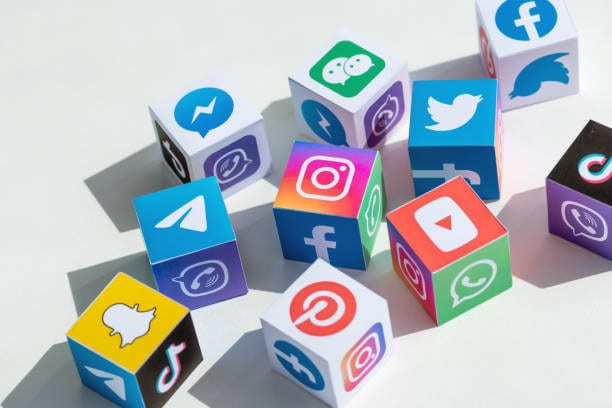How Multi-Touch Attribution Can Boost Your Marketing Strategy and ROI
 Let’s imagine someone first discovered your company’s offer on Instagram, then joined your email list, and finally made a purchase on Amazon. It’s tempting to give all the credit to Amazon just because that’s where the sale happened. But that overlooks how Instagram sparked the initial interest and how your emails kept them engaged. If you only focus on that last touchpoint, you miss out on the bigger picture of how each platform contributed. A multi-touch attribution model uncovers the value of each channel. It helps you make smarter decisions about your omnichannel strategy and where to invest your time and budget.
Let’s imagine someone first discovered your company’s offer on Instagram, then joined your email list, and finally made a purchase on Amazon. It’s tempting to give all the credit to Amazon just because that’s where the sale happened. But that overlooks how Instagram sparked the initial interest and how your emails kept them engaged. If you only focus on that last touchpoint, you miss out on the bigger picture of how each platform contributed. A multi-touch attribution model uncovers the value of each channel. It helps you make smarter decisions about your omnichannel strategy and where to invest your time and budget.
What is Multi-Touch Attribution (MTA) Model
Multi-touch attribution is a marketing effectiveness measurement technique that factors in every touchpoint along the customer journey that contributes to a conversion. This includes channels, campaigns, and any interactions, ensuring that each one receives credit for its role.
As mentioned earlier, only focusing on the last touchpoint and ignoring earlier interactions means you risk misjudging which channels truly drive awareness, engagement, and trust. Not to mention, modern customers often have much longer buying journeys. Research shows that over 70% of consumers take a month or more from initial brand engagement to making a purchase. MTA offers a way to see how each channel works together so you can make more accurate, precise decisions about budget allocation, strategy, and communication tactics.
What Are Common Multi-Touch Attribution Models
1. Linear or Even-Weighted Model:
It is assigns equal credit to every touchpoint in the customer journey, ensuring that all marketing efforts are recognized. This is a simple and straightforward model while doesn’t account for the varying levels of impact that different touch points may have on the buyer’s decision-making process.
2. Time Decay Model:
It is gives more credit to touch points that occur closer to the moment of conversion. This approach assumes that interactions nearer to the purchase decision are more influential in driving the sale. While it effectively highlights recent, impactful activities, it may undervalue earlier touch points that are crucial for building awareness and interest.
3. Position-Based (aka U-Shaped or W-Shaped) Model:
It is distributes most of the credit to the first and last touchpoints, with the remaining credit allocated to key interactions in the middle of the journey. In a U-Shaped model, the first and last interactions receive significant credit. The W-Shaped model adds extra weight to important mid-funnel touch points, such as email sign-ups or white paper downloads. This balanced approach provides a comprehensive evaluation of marketing efforts.
4. Data-Driven Model:
Unlike the first three models, which rely on predefined rules, this model uses machine learning to determine the precise impact of each touchpoint on conversions. It assigns credit based on the actual influence each interaction has on driving sales or leads. This method offers the most accurate insights but requires robust data infrastructure and advanced analytical tools, making it more complex and resource-intensive to implement.
How to Get Started with Multi-Touch Attribution Model

There are ton of benefits to adopting MTA to evaluate your marketing efforts and budgets. Don’t let this new concept intimidate you. Getting started with Multi-Touch Attribution doesn’t have to be overwhelming. By following a step-by-step approach, you can start small, implement the model effectively, and gradually gain more accurate and insightful marketing measurements.
Here’s how to get started:
- Define Your Goals and KPIs:
Are you measuring lead generation, online sales, or customer retention? Establishing clear goals and KPIs will help guide your attribution efforts and ensure alignment with your business objectives. - Map the Customer Journey:
Identify all the touch points your customers interact with, from awareness to conversion. It is will help you track the right data and ensure no key interaction is overlooked.
You May Also Want to Read: Core Difference Between Buyer Journey vs. Customer Journey - Choose the Right Attribution Model:
Select an attribution model that fits your current needs and data capabilities. If you’re new to MTA, start with a simpler model like Linear model. For more advanced insights, consider Position-Based or Data-Driven models as your data infrastructure matures. - Invest in Your Marketing Performance Tracking Tools:
Platform like google Analytics 4, HubSpot, Semrush or specialized attribution software are excellent options for you to collect necessary data using for MTA analysis.
You May Also Want to Read: What’s New With Google Analytics – How To Measure Your Audience - Test, Monitor, and Optimize Your Model:
Implementing an MTA model is just the beginning. Regularly test your attribution model by comparing its insights with actual performance data to ensure it aligns with your business goals. And make sure continually monitor key metrics to identify trends and pinpoint areas for further improvement and optimization.
Multi-Touch Attribution is a game-changer for marketers looking to understand the full value of their marketing and communication efforts across channels. By accounting for every interaction in the customer journey, it provides a more accurate, insightful view of what drives conversions, helping you allocate budgets effectively and optimize strategies. Don’t hesitate to explore this model—it could be the key to transforming your marketing success.
Ready to Elevate Your Marketing Strategy? ![]()



































